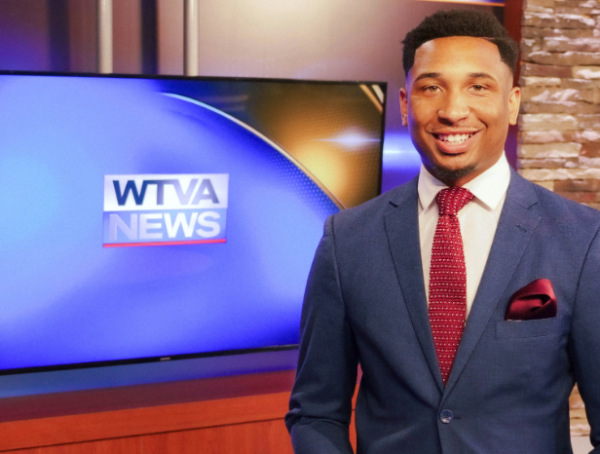Diversity in American newsrooms is at a deficit, says Lewis Diuguid, a former columnist and editorial board member at the Kansas City Star and recipient of the Louis M. Lyons Award for Conscience and Integrity in Journalism.
But, he says, the problem goes deeper than the newsroom and beyond the media itself. Promoting diversity starts years before stepping foot in the professional world. It begins, he says, with education.
“You have to realize and in some way appreciate the power of racism, sexism and homophobia and how longstanding they are and how resilient they are to change,” Diuguid says. “It’s only when we study just how they continue that we can realize another way to get people to see the truth. One way is through the media telling all aspects of the community, and another is schools having teachers who are advocates of teaching the values of diverse populations.”
Diuguid says journalists should not report just crime, but the stories of people performing positive acts for their community. A true and objective look at diverse groups is capturing their realities and not the stereotypes that have been perpetuated about them.
“Having journalists of color or women in newsrooms is important because it increases the likelihood that stories about people of color and all aspects of the community are told in a fair and accurate manner,” Diuguid says.
Creating a false reality
A lack of diversity causes a vacuum where the elements of cultivation theory can take root. Cultivation theory in psychology and mass media purports that how much time a person spends watching television is correlated with how that person perceives reality.
When American viewers are exposed to gender, racial, and social stereotypes on television—not just at home but at school, work and even in line for coffee—they begin to internalize those false views.
“It’s incumbent upon the press to do a good job telling the stories of these individuals because these are the stories that people need to know, to be able to look at a woman and say, ‘What I have seen in the media is a positive thing and this person is someone we need in order to bring that positive thing into our operation,’” Diuguid says.
“The media helps to change the dynamics because what’s running in the back of people’s heads should not be the stereotypes but rather the value of the individual and therefore the value those individuals bring into the workplace.”
Media has been aimed at the majority since its arrival on American soil, Diuguid says. In the 2018 US Census, the largest minority groups were 18 percent Hispanic or Latino, 13 percent African-American and 6 percent Asian American. Diuguid says that by 2045 these minority groups combined will equal the majority.
“The media and education need to change to be inclusive of the new majority and their stories, histories and how they have overcome oppression,” Diuguid says.
In fact, he notes, overcoming oppression is what makes these groups uniquely American.
“When you think about it, the stories of Latinos, African-Americans, Native Americans, Asian Americans and women are the quintessential American story,” he says. “These are individuals who have achieved despite overwhelming odds that have worked against them. They have been the Davids against the Goliaths of the world and yet they manage somehow not only to survive but to thrive.”
Opportunities for graduates
As the media becomes increasingly flooded with recent college graduates, Diuguid says individuals of diverse populations should focus on doing well in school and embracing internship opportunities.
“People of color, women and those in largely disenfranchised groups should be that much better to be lead persons seen as the best for those jobs,” Diuguid says. “It’s critical for young people to think of how they can reinvent themselves for the future so that they can become that much more marketable and valuable. News corporations will be falling all over each other to bring someone with something unique to the job that other people don’t have.”
As this issue has lived on, diversity fatigue has set in. The feeling of hopelessness in making real progress in diversity has resulted in what Diuguid explains is similar to the South plowing the same fields until the soil is depleted. White fatigue has developed as response, meaning white people are tired of feeling responsible for the needs of diverse populations that they do not relate to on a personal level.
Diuguid says these types of fatigue can be remedied if people can get back to what media used to be—two neighbors discussing over the fence between them the events and topics of the day. As the news media produces segments that are monotonous, with what boils down to predominantly white and male issues, Americans don’t have anything to discuss between their different groups.
“If you look at day to day journalism that’s put out, whether it’s new media or traditional media, we bore people,” Diuguid says. “It’s the kind of media we have always delivered to them for the past 100 years, and that’s the focus on whites and male.”
Today, the only way to be immersed in the details of minority topics is to go to the publications specifically aimed at those minority groups. Americans get comfortable with the media they usually turn to and it is difficult to incentivize people to seek out information that might not directly pertain to themselves.
“We cripple our population because if a newspaper or TV station are supposed to be conversation starters about what’s going on in our communities, then we are handicapping people because we haven’t given them anything that allows them to connect with their neighbor who may be of a different race, gender or sexual orientation.”
If people are unable to connect across their different identities, histories and perspectives, the media will continue to run in separate circles, trying to create a united community but in fact speaking to one targeted demographic. His advice: “We need to step up our game to give people the tools they need to have conversations and engage the changing public in a way that can be positive and productive.”

Jacqueline Schlick is an Orlando native who found her voice in the deep south. She graduated from the University of Mississippi with a creative writing degree and will complete her master’s in journalism in 2019. She serves as the public relations director for Ole Miss Bands and as the Communications Manager for the university’s Division of Diversity and Community Engagement. Upon graduation, she plans to attend law school and work within the intersection of journalism and the law.








